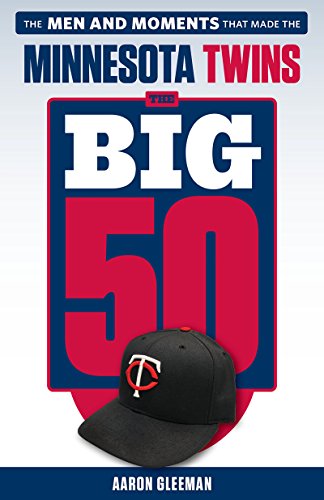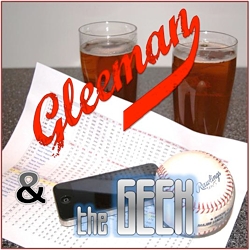June 6, 2006
The Twins' Draft
Under Terry Ryan the Twins have been one of the most pitching-heavy teams when it comes to the draft, with the most extreme example being when the team took 14 pitchers with its first 17 picks in 2004. However, with the team in the midst of a third straight season with one of the league's worst offenses, Ryan and scouting director Mike Radcliff drastically changed their draft-day approach yesterday.
Not only didn't the Twins use the majority of their picks on pitchers, they actually took hitters with 14 of their 19 day-one selections. It remains to be seen whether or not the picks were good ones, but I'm pleased that steps are finally being taken to address the organization's lack of hitting. Unfortunately for the big-league lineup, no one drafted yesterday will make an impact in the majors for at least a couple seasons.
In fact, since only six of the hitters were of the college variety most of them have little chance of playing more than a few games at the Metrodome. It's impossible to argue with the Twins' results when it comes to finding talented pitchers in the draft over the years, but in the long run they may have been better off adopting a more balanced approach somewhere along the way rather than waiting until now to completely change their focus.
With their first pick and the 20th overall, the Twins took high-school slugger Chris Parmelee. Baseball America ranked Parmelee as this year's second-best "pure hitter" among high schoolers and also gave him the nod as the owner of the "best strike-zone judgment" among prep hitters. MLB.com reports that Parmelee's "smooth left-handed swing provides line drives now and presents the kind of power scouts like." In other words, he's the hitter "with middle-of-the-order potential" who I was hoping for.
In the second round the Twins nabbed Joe Benson, a high-school catcher who is expected to become an outfielder in the pros. MLB.com described Benson as having "a power-speed combination that excites scouts" and deemed him "raw, but projectable." While the Twins will have to cough up enough bonus money to convince Parmelee to skip playing college baseball, they'll have to talk Benson into not playing baseball and/or football at Purdue.
The Twins went back to pitching in the third round, taking high-school lefty Tyler Robertson. At 6-foot-5, BA says "some describe his delivery as funky, others as ugly" and adds:
After he begins his windup, Robertson's left arm, in the words of one scout, plunges straight down. He then brings the arm back up and goes to the plate. While he repeats the arm action, it's hard for scouts to project Robertson improving his stuff much. Overhauling his mechanics could cost him development time, but with his size and resume it might be worth it.
Interestingly, both Parmelee and Robertson are signed to play college ball at Cal-State Fullerton.
In the fourth round the Twins dipped into the college ranks for the first time, selecting Georgia Tech first baseman Whit Robbins. Robbins led what was a very good team in just about every offensive category, hitting .358/.474/.603 with 12 homers, 32 total extra-base hits, and a 37-to-41 strikeout-to-walk ratio in 62 games.
A left-handed swinger like seemingly every decent hitting prospect the Twins have, BA says Robbins "generates good bat speed" and "has a sound approach, with good pitch recognition and plate discipline." There's also apparently some hope that he can play third base or left field in the pros, rather than being stuck at first base.
With their second fourth-round pick the Twins selected another college hitter, infielder Garrett Olson from Division II Franklyn Pierce College. BA reports that Olson was athletic enough to play shortstop this season, but that "most scouts see him at second base or third base." Playing in a conference that uses wood bats, Olson hit .367/.425/.663 with 14 homers, 38 total extra-base hits, and a 24-to-20 strikeout-to-walk ratio in 59 games.
The fifth-round pick was high-school outfielder Devin Shephard, who MLB.com describes as "built like a football player" and possessing "good power potential with a strong throwing arm as a corner outfielder." On the other hand, BA reports that "to his detractors ... he's a showcase and batting-practice player who doesn't carry his tools into games."
The Twins went back to college in the sixth round, taking Nebraska catcher Jeff Christy. BA calls Christy "one of the better defensive catchers in the college game" and he better be, because his hitting numbers are ugly. After batting just .232 with a .277 slugging percentage in 2005, Christy improved to a still-modest .284/.345/.468 with eight homers, 20 total extra-base hits, and a 35-to-17 strikeout-to-walk ratio in 56 games. Those aren't the type of metal-bat performances that translate well in the pros.
Most of the remaining picks were from high schools or small colleges, but there are a few other guys worth noting. In addition to having a name that sounds like the guy who was fired from American Idol, eighth rounder Brian Dinkleman is a second baseman who won the NAIA Player of the Year Award this season. Ninth rounder Sean Land is a 6-foot-5 lefty from the University of Kansas, but struggled with a 5.56 ERA and 55-to-35 strikeout-to-walk ratio in 87.1 innings.
Steve Singleton is an interesting pick in the 11th round. A shortstop at the University of San Diego, he hit .363/.412/.510 with five homers, 24 total extra-base hits, and a 16-to-17 strikeout-to-walk ratio in 58 games. Aaron Senne was the first of two Minnesotans drafted by the Twins, and BA calls the Rochester Mayo product "Minnesota's top high school prospect." Of course, that label means a lot more in some years.
Last but not least, the Twins took Notre Dame right-hander Jeff Manship in the 14th round. Manship is an interesting pick because he missed the entire 2004 season after undergoing Tommy John elbow surgery. BA says he was "one of the most coveted recruits in the 2003 high school class" prior to the injury and MLB.com reports that he "relies on a plus, plus curve."
Manship's numbers were outstanding this year, as he went 9-2 with a 3.26 ERA and 111-to-28 strikeout-to-walk ratio in 94 innings, holding opponents to a .223 batting average. Of course, as with most college stats those numbers need to be taken with a grain of salt. Why? Because Notre Dame had a team ERA of 3.52 and among the 10 pitchers with at least 25 innings he ranked just fifth in ERA.
All in all, I think the Twins did a solid job. I'm happy that the team took some chances on guys whose calling card is their bat, because the organization has lacked power-hitting prospects for the better part of two decades. I also think the Twins struck a good balance between high-risk, high-reward types (Parmelee, Benson, Robertson, Shepherd, Manship) and low-risk, quick-impact types (Robbins, Olson, Singleton).
The main criticism I have is that the team again failed to address its longstanding lack of major league-ready middle-infield depth, which could have been solved by picking one or two college shortstops early. In addition to that, many of the high-school picks placed too much emphasis on speed and tools for my tastes, and I would have liked to see a few more accomplished college hitters picked in general.
In the end the overall quality of the draft hinges largely on whether Parmelee can develop into a big-league slugger and whether the Twins can sign some of the college-bound players and convert their athleticism into baseball skills. I'd be shocked if Christy ends up as anything more than a wasted sixth-round pick and I'd bet on Robbins being the first 2006 draftee to play in the majors.

